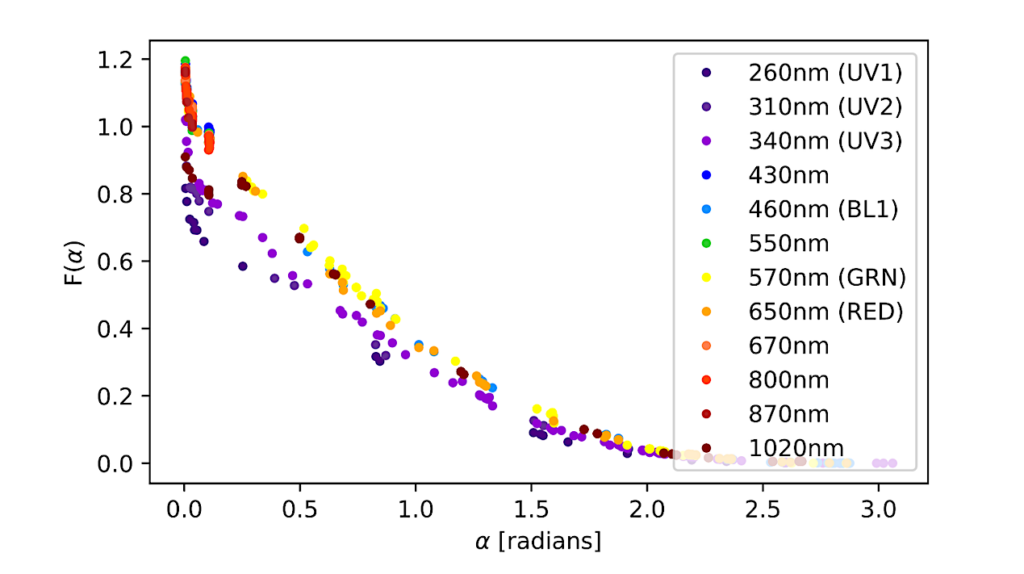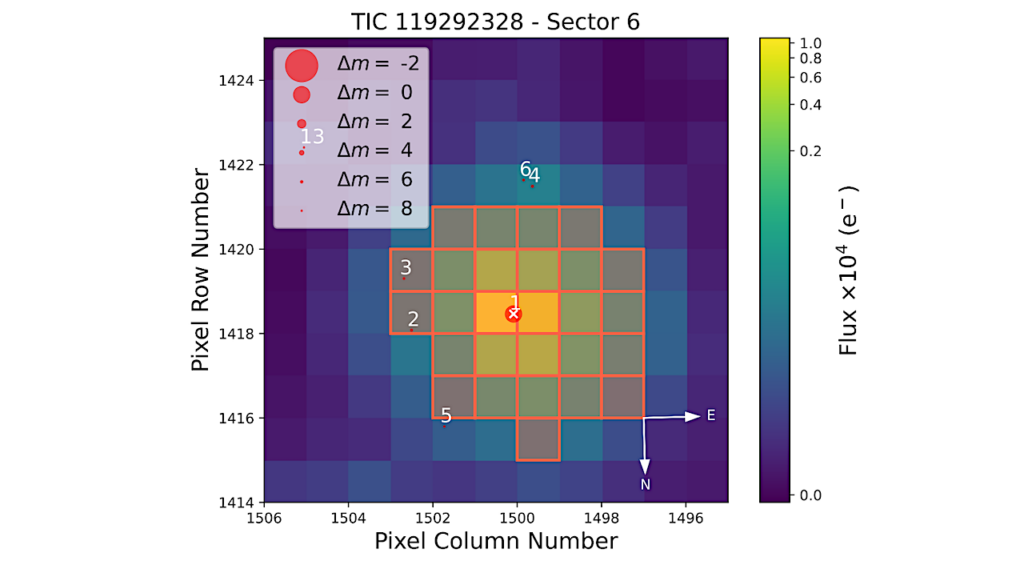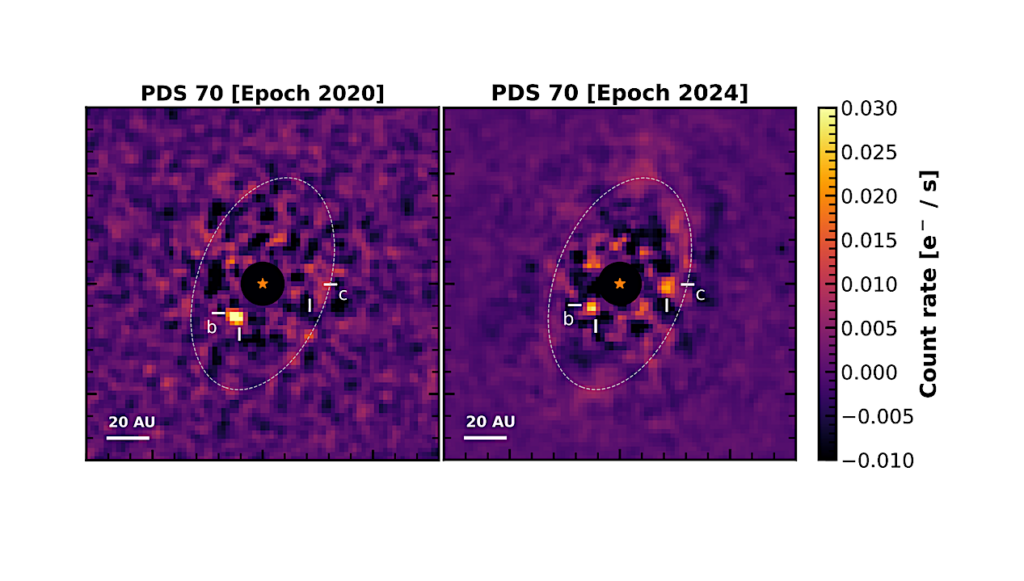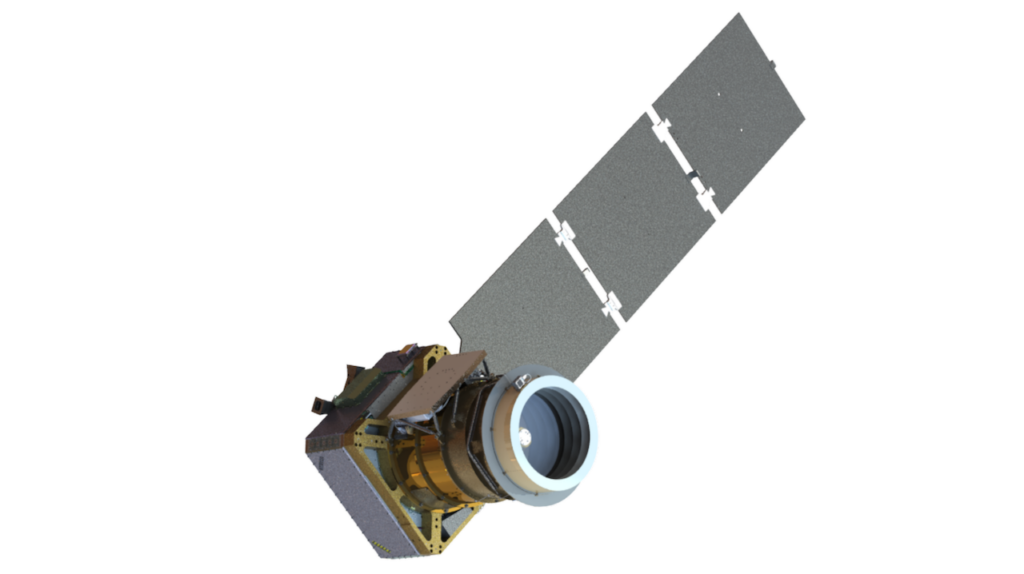Ground-based Optical Transmission Spectroscopy of the Nearby Terrestrial Exoplanet LTT 1445Ab
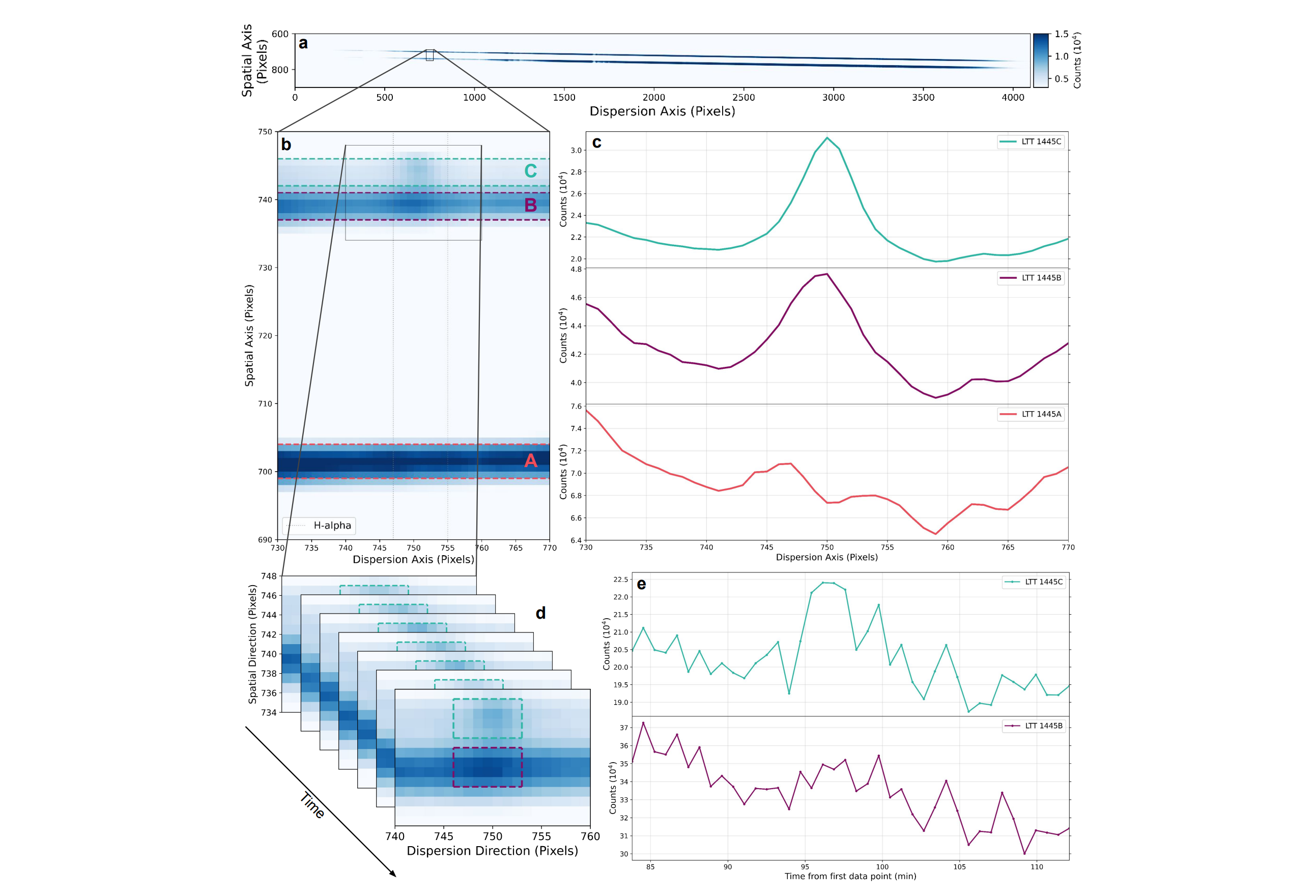
Nearby M dwarf systems currently offer the most favorable opportunities for spectroscopic investigations of terrestrial exoplanet atmospheres.
The LTT~1445 system is a hierarchical triple of M dwarfs with two known planets orbiting the primary star, LTT~1445A. We observe four transits of the terrestrial world LTT~1445Ab (R=1.3 R⊕, M=2.9 M⊕) at low resolution with Magellan II/LDSS3C. We use the combined flux of the LTT~1445BC pair as a comparison star, marking the first time that an M dwarf is used to remove telluric variability from time-series observations of another M dwarf.
We find Hα in emission from both LTT~1445B and C, as well as a flare in one of the data sets from LTT~1445C. These contaminated data are removed from the analysis. We construct a broadband transit light curve of LTT~1445Ab from 620–1020 nm. Binned to 3-minute time bins we achieve an rms of 43 ppm for the combined broadband light curve.
We construct a transmission spectrum with 20 spectrophotometric bins each spanning 20 nm and compare it to models of clear, 1× solar composition atmospheres.
We rule out this atmospheric case with a surface pressure of 10 bars to 3.4σ confidence, and with a surface pressure of 1 bar to 2.9σ confidence. Upcoming secondary eclipse observations of LTT~1445Ab with JWST will further probe the cases of a high mean molecular weight atmosphere, a hazy or cloudy atmosphere, or no atmosphere at all on this terrestrial world.
Hannah Diamond-Lowe, Joao M. Mendonca, David Charbonneau, Lars A. Buchhave
Comments: 15 pages, 10 figures, 4 tables, submitted to AJ
Subjects: Earth and Planetary Astrophysics (astro-ph.EP)
Cite as: arXiv:2210.11809 [astro-ph.EP] (or arXiv:2210.11809v1 [astro-ph.EP] for this version)
https://doi.org/10.48550/arXiv.2210.11809
Focus to learn more
Submission history
From: Hannah Diamond-Lowe
[v1] Fri, 21 Oct 2022 08:34:21 UTC (1,813 KB)
https://arxiv.org/abs/2210.11809
Astrobiology


